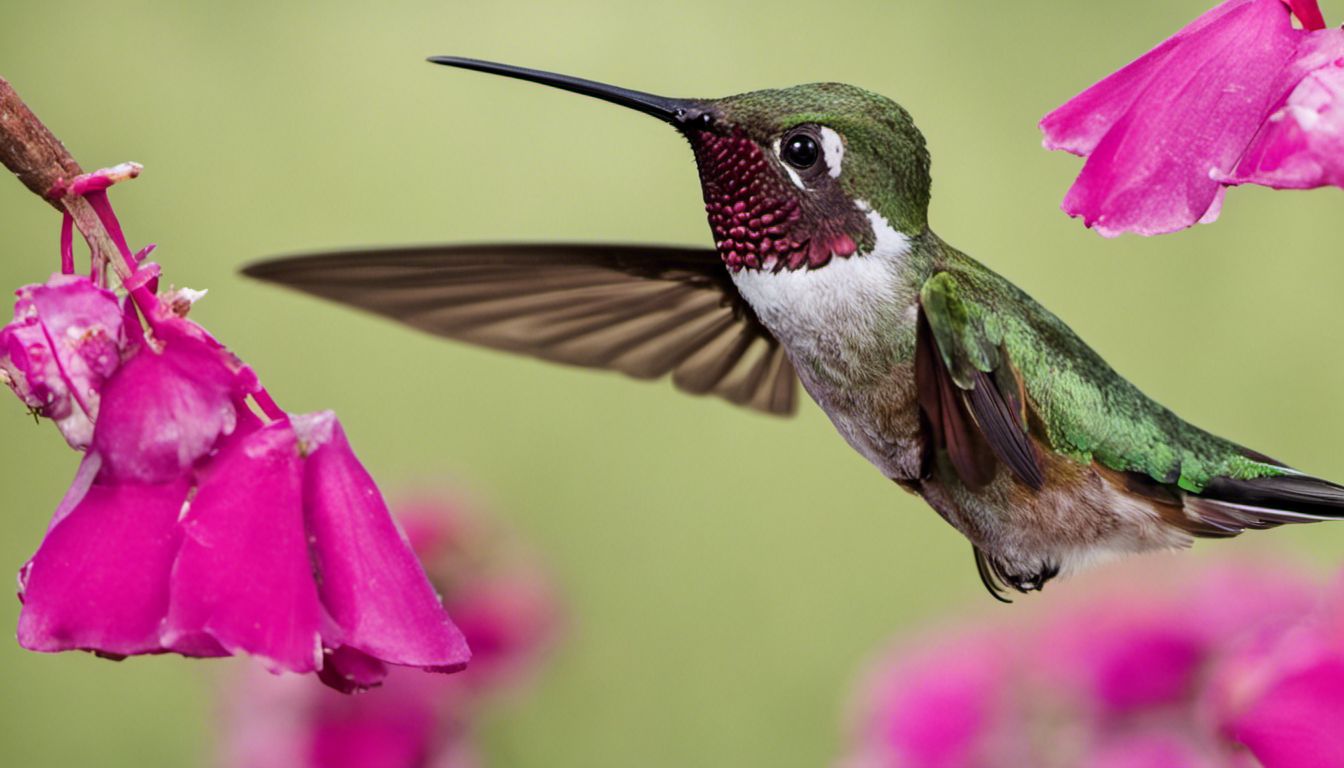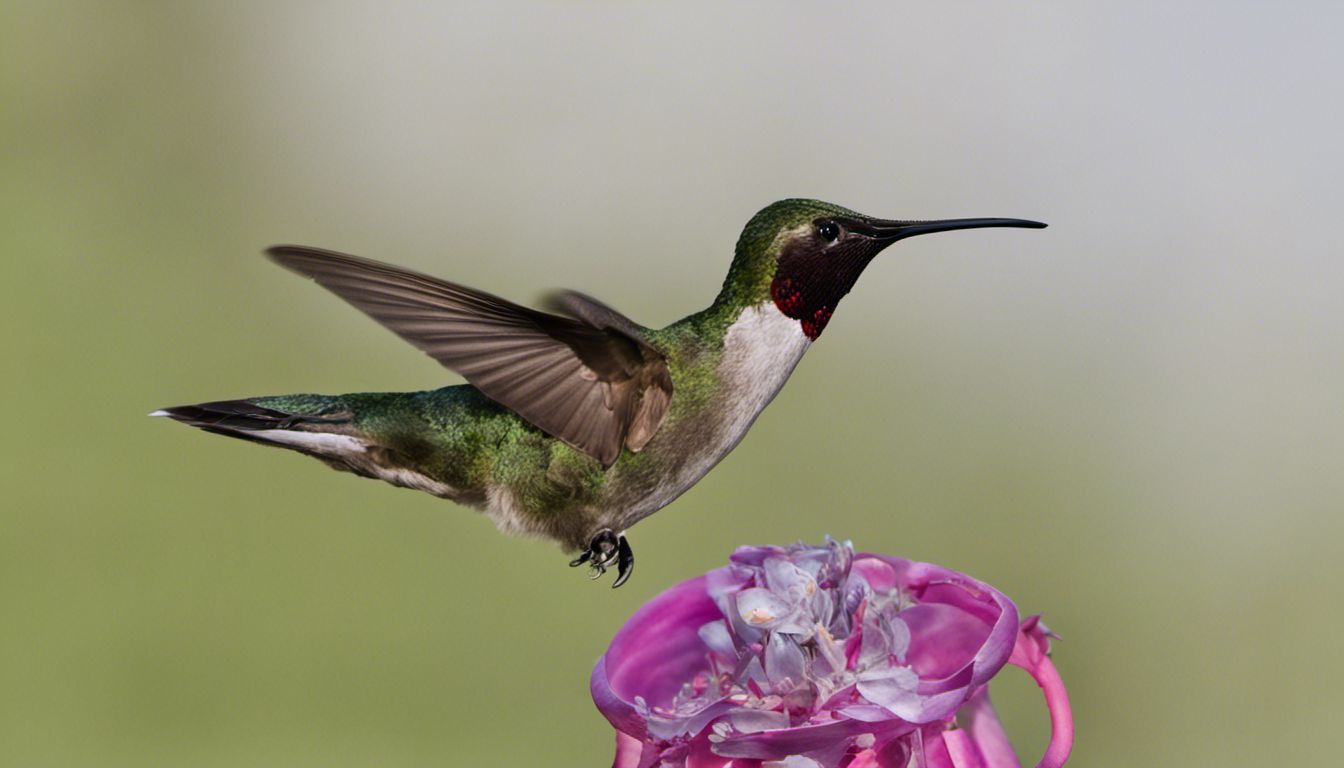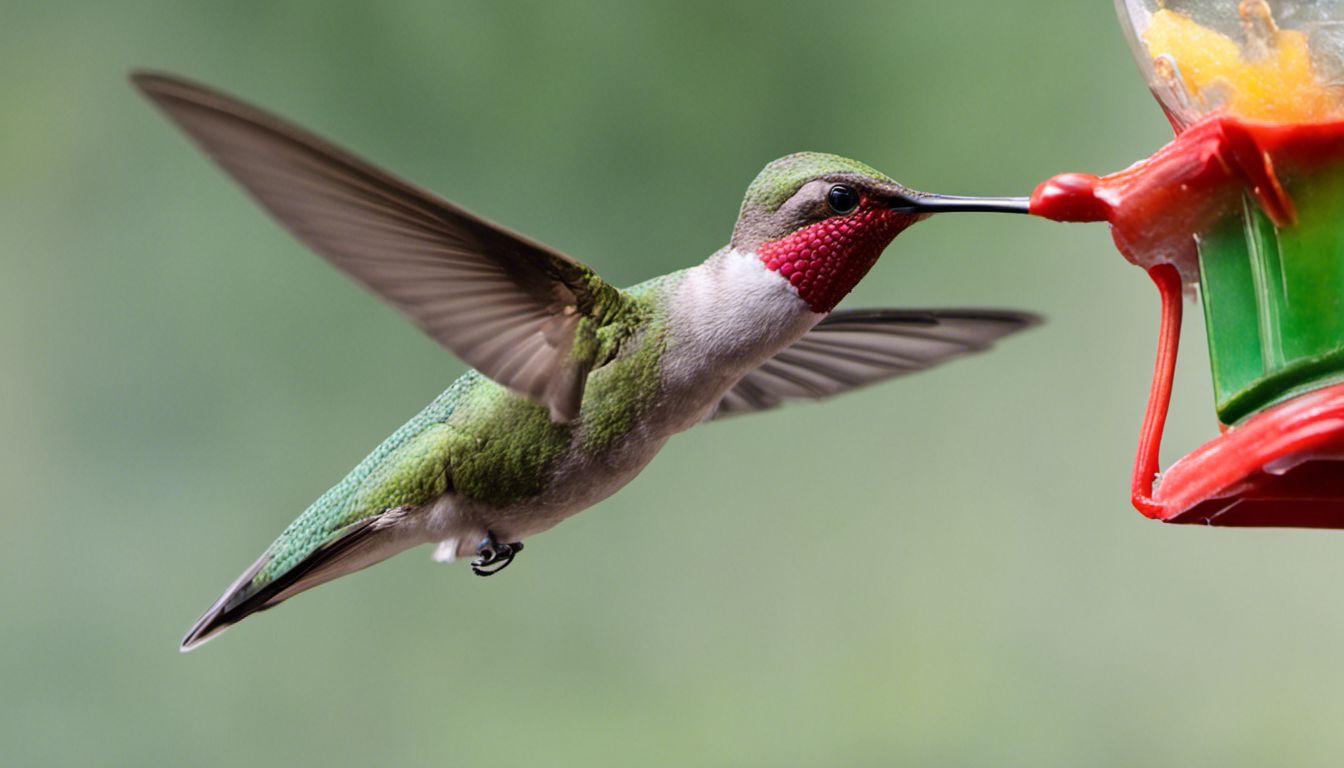Yes, hummingbirds do open their beaks, primarily for feeding but also for other reasons such as preening, thermoregulation, and as a defensive behavior. Despite the common perception otherwise, their beaks are not permanently closed and they exhibit versatility in their use.
Here are some key takeaways about how hummingbirds use their beaks:
- Misconceptions: Many believe hummingbirds’ beaks are always closed, but they can indeed open them for various activities.
- Beak Usage: Hummingbirds open their beaks for feeding on nectar, catching insects, preening, and to manage their body temperature.
- Beak Structure: The beaks of hummingbirds are not rigid tools; they are flexible, adapted for precision in accessing flowers and fit for capturing insects.
- Beak Strength: Despite their delicate appearance, hummingbird beaks are strong enough to handle the birds’ dynamic feeding and defensive requirements.
Misconceptions on Hummingbird Beak Usage

When it comes to the beaks of hummingbirds, there’s a common myth that these birds never open their beaks. Let’s set the record straight: hummingbirds are definitely capable of opening their beaks. Contrary to what some may think, their beaks aren’t just for sipping nectar. They also open their mouths wide to snack on insects, which are an essential part of their diet. Beyond feeding, hummingbirds have been observed yawning just like other creatures, which certainly requires them to open up.
Check out some important points about the misconceptions surrounding hummingbird beak usage:
- Myth Busted: Despite the misconception, hummingbirds do open their beaks when necessary.
- Nectar Feeding: While they are often seen feeding on nectar with a seemingly closed mouth, they can open their beaks to adjust their tongue’s position.
- Insect Eating: For a protein boost, hummingbirds open their mouth to catch insects, debunking the myth that their beaks are always closed.
- Yawning: Just like many animals, hummingbirds may open their beaks when yawning, which is a natural behavior.
How Hummingbirds Use Their Beaks

Hummingbirds have an incredibly unique way of using their beaks that goes far beyond just sipping nectar. The magic really happens with their long, specialized tongues that dart in and out, up to 13 times per second, to lap up nectar. But that’s not all – they can also open their beaks to skillfully snatch solid foods like insects right out of the air. And while they’re known for their peaceful demeanor, hummingbirds have been known to use their beaks defensively on rare occasions – almost like a tiny, feathery fencing master.
Here’s how hummingbirds put their beaks to use:
- Beak Functionality: While their slender beaks help them reach deep into flowers, it’s their tongues that are the real stars for nectar sipping.
- Feeding on Insects: To complement their liquid diet, they open their beaks to capture insects, providing necessary protein and nutrients.
- Defensive Use: Though not common, hummingbirds can use their beaks as a weapon in defense, illustrating the beak’s multifunctional nature.
The Structure and Strength of Hummingbird Beaks

The anatomy of a hummingbird’s beak is as fascinating as their flitting flight. One might wonder, are these slender beaks hard or soft? They’re actually a bit of both – firm enough to probe into flowers yet surprisingly flexible when it comes to catching insects. Hummingbird beaks are resilient, but they do run the risk of damage. When injured, these creatures have an astonishing ability to recover as their bodies can heal from minor beak fractures, although severe damage can be more problematic in the wild.
Delving into the hummingbird’s beak strength and structure, let’s consider these aspects:
- Beak Anatomy: Hummingbird beaks are a balance of rigidity for flower probing and flexibility for capturing prey.
- Rigid or Flexible: While they appear dainty, the beaks are durably constructed but can bend slightly to better grasp insects.
- Beak Damage: Though their beaks are strong, they can incur damage or break, posing a challenge for their feeding habits.
- Beak Healing: In nature, hummingbirds can rebound from minor injuries, as their beaks have limited capacity to recover from some types of damage.

